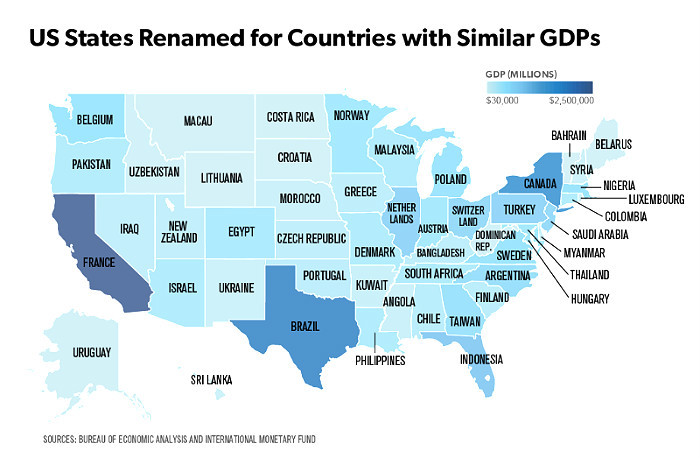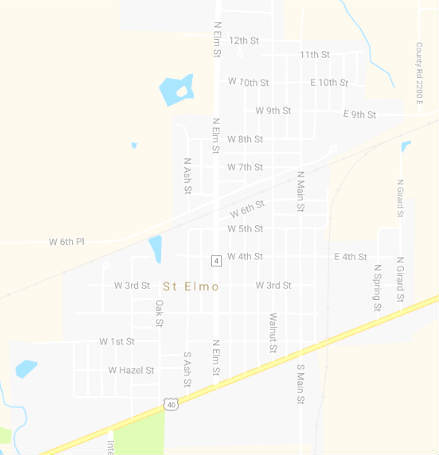America as we see it
The real numbers to help you understand the United States of America: the market, the country, the culture, the lifestyles, Millennials, technology, and the next future developments
Absolutely nothing changes for all the companies we work with at ExportUSA if the gross national product of the United States of American grows by 2% rather than by 2.2%
Look at other numbers and phenomena to understand the potentials of the American market and to design successful strategies to enter the United States
The United States has always been the frontier for novelties, trends and innovations. With no fear of change, without the thousand “snags and snares” Einaudi cited, many new things are created in America and then spread out from there to change our lifestyle. Grasping these trends helps you position yourself in the U.S. market, but it also helps you anticipate the trends emerging in many other markets (Facebook is everywhere, as is Coca Cola and the iPhone; driverless vehicles will spread out from America; and in the meantime, Starbucks is opening 5 coffeeshops in the center of Milan).
The historical overview and prospective on this page, more than the data on the growth of the gross domestic product, provides an idea of the dynamicity of the American market and why it offers so many opportunities
Well aware that this is a page destined to be old from the moment it appears, we think it could nevertheless offer some helpful tips for those who can read between the lines.
Gross National Product - United States and Italy
- USA GDP: $19 Trillion
- ITA GDP: $2.3 Trillion
These 11 American metro areas produce 40% of the Gross Domestic Product in the United States of America
- New York (NYC + LAX = 14% GDP Total = $2.4 Trillion, versus Italy = 2.2 trillion)
- Los Angeles
- Chicago
- Washington DC
- Houston
- Dallas
- Philadelphia
- San Francisco
- Boston
- Atlanta
- Miami (operational and logistical base for business with South America)

California is a market the size of that of France; Texas is equal to Brazil, while Washington state has a GDP equivalent to that of Belgium. New York state is a market the size of all of Canada’s.
The Climate in the United States of America
On the same day in January, Montana experiences arctic temperatures, while in Florida people go swimming. Sellers of bathing suits and cashmere sweaters need to consider:
Phenomena, numbers and names that give a sense of the United States of America
- 3 top foods = hamburgers, hotdogs and pizza
- 625,000 restaurants
- 120,000 food-related points of sale
- 52,000 weapons-related points of sale
- Millennials = 85 million; Gen Z = 25 million - These two new demographic segments are already influencing and orienting consumption in America. It’s crucial to be attuned to their lifestyles when designing products and services appropriate to the new generations of consumers.
- Starbucks: started in 1971 and now has 25,000 direct (non-franchise) points of sale
- Google: started in 1998 and now has 60,000 employees
- Amazon started in 1995 and now has 345,000 employees, its own airport in Ohio, container ships, cargo airplanes and a fleet of TIR vehicles
- Internet/Web: originated with an American military project
- Tesla
- Drones
- Driverless cars and trucks - the emergence of robotics - IoT (Internet of Things) - What new social models will arise due to the spread of these technologies?
- AirBnB/Uber = THE SHARING ECONOMY
- Facebook = 2 BILLION users = SOCIAL MEDIA
- Twitter and politics
- Apple, iPad, iPhone, Google, Amazon, YouTube, Netflix - These are just some examples of companies and products that are radically influencing our lifestyle (there’s no denying it) and how we consume things.
- The “Old” = Coca Cola, McDonald’s => PRODUCT
- THE “NEW” = Starbucks = EXPERIENCE (Millennials + Gen Z)
- Bitcoins, blockchains, and more than 1,000 cryptocurrencies developed in recent years. America is again confirmed as the country of innovation in ways that we couldn’t even imagine a few years ago.
America: Main Street - Italy: Public Square
 Towns and cities in the vast regions of the United States don’t have “public squares” the way Italy and other countries do. They have a Main Street instead. Every American town has its own Main Street (just as we have the Piazza Roma), and the town does not develop around a square but rather along Main Street, following the lead of the settlers that used to go West.
Towns and cities in the vast regions of the United States don’t have “public squares” the way Italy and other countries do. They have a Main Street instead. Every American town has its own Main Street (just as we have the Piazza Roma), and the town does not develop around a square but rather along Main Street, following the lead of the settlers that used to go West.
 (+1) 718-5225575
(+1) 718-5225575
 (+1) 718-5225575
(+1) 718-5225575

 Towns and cities in the vast regions of the United States don’t have “public squares” the way Italy and other countries do. They have a Main Street instead. Every American town has its own Main Street (just as we have the Piazza Roma), and the town does not develop around a square but rather along Main Street, following the lead of the settlers that used to go West.
Towns and cities in the vast regions of the United States don’t have “public squares” the way Italy and other countries do. They have a Main Street instead. Every American town has its own Main Street (just as we have the Piazza Roma), and the town does not develop around a square but rather along Main Street, following the lead of the settlers that used to go West.